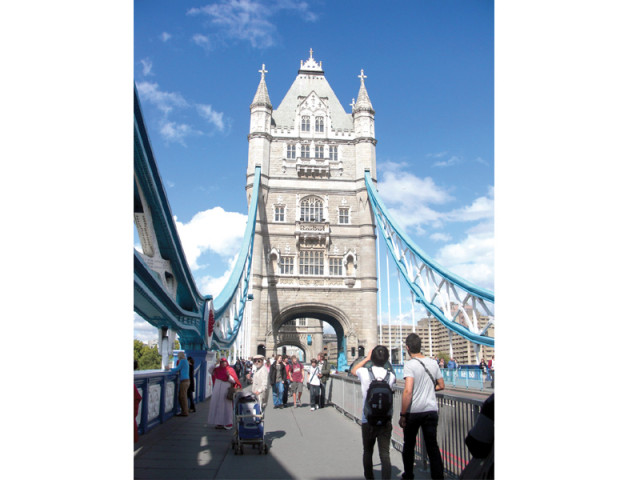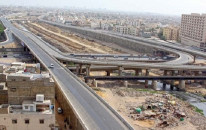London, London hai
London, one of the busiest cities in the world, always slows down for the comfort of its visitors and residents.

Who can possibly avoid falling in love with one of the most beautiful cosmopolitan cities of the world, which is not just a visual and historical delight but also a unique masterpiece of urban planning?
It is fascinating how London, one of the busiest cities in the world, treats its citizens and visitors. One of the greatest features of London is its inclusive approach towards the disabled, making sure they do not feel left behind. All buildings are required to provide wheelchair access and toilet facilities for disabled people.
While most such cities have built their urban centres keeping cars and motorists in mind, for London the focus seems to be pedestrians and bicycle owners. The city administration employs a strict environmental agenda and a green policy, going so far as to impose ‘congestion charges’ on motorists in busy districts at certain times of the day.
By rejecting the gas-guzzling car culture, London has encouraged walking and bicycling. Many areas and localities have now been declared ‘car-free’ having been successfully ‘pedestrianised’ and turned into tourist spots and promenades.
Spurred on by the rising trend of bicycling, Barclays Bank sponsored a recent innovation called the ‘bicycle hire scheme’. Spread across many of London’s districts, the scheme allows people to hire a bicycle from any of the numerous coin-operated self-help docking stations. These bicycles can then be returned to a docking station near one’s destination. Each station is well-maintained, displaying a code of conduct, hire rates and operation methodology.
The rights of pedestrians are of utmost importance in London. Pavements and walkways are unobstructed and well-maintained and under-construction buildings are not allowed to encroach on the pavements. Keeping aesthetics in mind, all buildings have to be properly masked off with billboards and even external scaffolding pipes at the lower levels are to be covered with timber.
One of the more bizarre facilities in London are the open public urinals on the streets. Designed as island units, they are placed at different spots across the city. One such urinal unit was right outside a famous theatre which reminded me of our own roadside relieving gentlemen back home in Pakistan. After a while, however, it ceased to look absurd, and instead emerged as a fairly ingenious innovation. And contrary to what you might think, it was busy most of the time. Yes, there were Londonders relieving themselves right in the middle of an open street outside a major theatre! Besides these standalone urinals, London provides state-of-the-art, coin-operated, self-cleaning toilet units for its citizens, all strategically located.
For those travelling longer distances, there is the public transport system which is absolutely amazing in design and function. The famous red buses of London, the underground train system (The Tube) and the overhead trains network are almost perfect examples of public transport done right. Besides being people friendly, they facilitate wheelchairs, prams and extra luggage, with plenty of docking space. The design and security of the buses has been greatly enhanced over the years with ergonomic seats, grip bars, and CCTV cameras. The buses stop at well designated stops, which are adorned with location maps and display available routes and guides. The buses have electronic ticket dispensers and LED timing panels and while the tickets may seem a little expensive for the occasional traveller, cheaper day passes and other discounts are also available.
If you are commuting from the airport and think that the London taxi service is really expensive, then all you have to do is take the Tube as soon as you get off the plane and disembark at the station closest to your destination. Even a simple act such as towing your suitcase is made easier due to well-maintained and wheel-friendly pavements. The kerbs of all pavements allow for ease of access for wheelchairs, prams and wheeled luggage, which means that no lifting of heavy cases is required. On crossings, either the road is raised to pavement level or the kerb is lowered for the ease and comfort of the pedestrians. The roads are intersected by a network of ‘Pelican crossings’ and ‘Zebra crossings’ (both originally British inventions), all of which help in promoting a pedestrian-friendly atmosphere.
Once upon a time you could see people on the streets walking around with a copy of the famous ‘A to Z’ guide map of London but these paper guides are now a thing of the past. Now, there is a guide map at every exit and entry transit point and car owners rely exclusively on GPS systems instead of those portable maps.
Despite all the financial troubles faced by the UK and EU, London still thrives. It’s a hub for people from every corner of the world, where every corner you turn brings you to a new architectural masterpiece. It’s a city that is firmly rooted in the traditions of the past but still manages to keep its eyes on the future. We could do far worse than to emulate this model.
Published in The Express Tribune, Sunday Magazine, June 10th, 2012.


1701351241-1/Afghan-refugees-(3)1701351241-1-208x130.webp)
















COMMENTS
Comments are moderated and generally will be posted if they are on-topic and not abusive.
For more information, please see our Comments FAQ